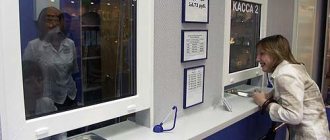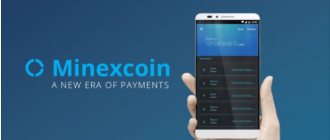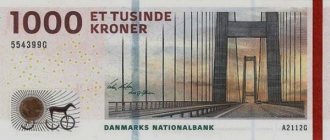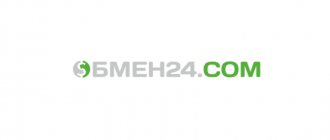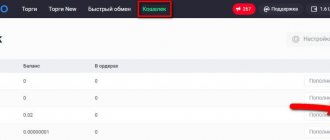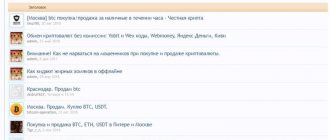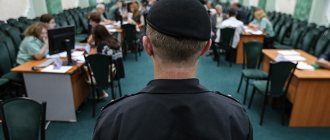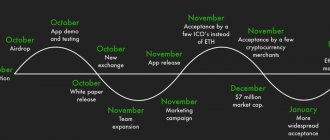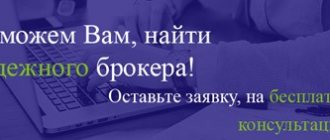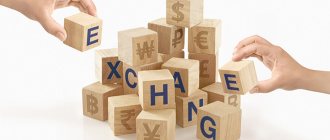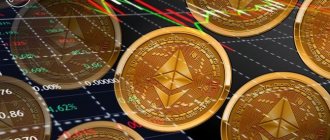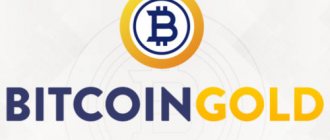The sale of dollars in Sberbank today is carried out in accordance with the rules established by law and requires passing a certain identification procedure. For many years now, the dollar has been one of the main currencies in which many Russians keep their savings.
Requirements of the Central Bank regulations on currency exchange rules
In December last year, the Central Bank's regulation, which regulates the rules of currency exchange, came into force. It must be said right away that the rules have become much stricter. Now, in order to sell or buy currency, you need to go through full identification, which includes filling out a special form. But these innovations apply only to those operations that are carried out in amounts over 15 thousand rubles. If we compare it with the old rules, then we were talking about an amount of 600 thousand rubles. As you can see, the difference is significant.
Of course, such changes in existing legislation make the process of buying or selling currency a little more complicated. After all, previously a person could exchange the amount of currency he needed only upon presentation of a passport. Now you need to go through full identification. In the form you must indicate:
- FULL NAME;
- date and place of birth.
- citizenship;
- address of permanent residence;
- tax identification number;
- all contact information (phone number, email, fax).
Although that's not all. Sberbank employees have every right to demand from the client confirmation of his income, as well as the origin of these funds. From the rules for selling and buying currency, it is clear that Russians now need to prove that the money they want to sell to the bank has a legal and official origin.
Changes in 2020 and 2020
In 2020, a number of amendments came into force, mostly relating to the work of credit, banking and insurance institutions, as well as changing some of the wording in Law No. 115-FZ. As an example:
- The edition dated April 23, 2018, which came into force on July 23, 2018, introduced the term “terrorism financing” into the basic concepts;
- The edition dated April 23, 2018, which came into force on June 30, 2018, established the requirement to open a deposit only in the personal presence of the client;
- Federal laws dated December 31, 2017 N 482-FZ and N 470-FZ December 29, 2017, adopted just before the new year 2018, regulate: a new understanding of the term “identification” and new powers of the Interdepartmental Commission processing complaints regarding illegal blocking accounts.
To summarize, there are no changes in 2020 or 2020 in terms of currency exchange. As before, you can exchange amounts up to 40,000 rubles without identification; when making transactions in the amount of 40,000 to 100,000 rubles, you will need to present documents for simplified identification.
The issue of profitable purchase or sale of currency is always relevant: someone changes small amounts before or after foreign trips, someone saves currency, periodically purchasing it in large portions, and someone tries to make money on rate fluctuations. Those who frequently change currencies use their own life hacks.
Passing the identification procedure
True, there is one positive nuance in all this. It is enough to go through this procedure once. That is, if a client has previously been serviced by this bank, then the next time he contacts he does not need to go through identification. Representatives of the Central Bank gave clear explanations. The identification form is filled out by bank employees themselves, so the client will not feel any particular discomfort. Moreover, this document is filled out based on the data stored in a specific database. And only if that information is not enough, an employee of a credit institution may require the client to provide more information about himself. In general, the client just needs to provide a passport, and the transaction he needs will be carried out.
In addition, the majority of clients who buy or sell foreign currency are not at risk. Therefore, it is not necessary to provide supporting documents about the origin of funds, as well as business reputation. Sberbank employees may selectively require such a document, but this is rather an exception to the rule. Basically, buying or selling dollars at a savings bank takes place without unnecessary fuss and difficulties.
If during the service process the client has a number of additional questions, he can contact the Central Bank hotline with them.
What are the tariffs?
Now let's talk about the commission fees that Sberbank charges when performing transactions with money from other countries:
- The purchase or sale of foreign banknotes for cash rubles is free of charge at the rate announced by Sberbank at the time of the transaction.
- Selling the currency of one state for the money of another, i.e. Conversion is also free of commission fees.
- To exchange a large banknote for money from the same state, you will have to pay 5% of the amount.
- When replacing damaged, dirty or torn bills, you will be charged 10% of the value of the currency. In the same way, you can purchase damaged money with a 10% discount on the face value. The same commission applies when sending a banknote for collection.
- Checking the authenticity of money will cost the client 10 rubles for each banknote, but not less than 100 rubles for the entire operation.
Commission rates.pdf [241.74 Kb] (downloads: 234) View online file: Commission rates.pdf
What else should the client provide?
After the introduction of this decision, rumors began to appear that the Central Bank wants to introduce some other restrictions for residents who want to buy or sell currency. This is the so-called strict exchange control. This panic was a consequence of certain statements that were voiced in 2014 by representatives of the majority in parliament. They proposed passing a law that would prohibit the circulation of dollars in the country. In turn, the presidential adviser proposed introducing a fixed exchange rate for the domestic currency.
But, as you can see, all these proposals were not implemented. In addition, the country's prime minister said that a complete abandonment of the euro and dollar would worsen the existing economic situation in Russia and would not allow building a modern economy.
As a result, we can safely say that there is no Iron Curtain in the country. Russian citizens can, as before, freely sell and buy currency. And even additional identification is not a barrier to this. Moreover, it is carried out quite quickly and does not take extra time from the client. Therefore, skeptics can calm down: there is a dollar and euro in the country. Anyone can buy dollars at Sberbank today without any difficulties.
Buying currency online. What do you need to know? Where are the best courses?
February 11, 20197305
The development of remote banking services has freed us from the need to once again contact bank branches. One of the most convenient functions is online currency exchange. Have you heard of this? Then sit back, we’ll tell you: At the end of 2020, Belarusians bought almost $8 billion worth of foreign currency (in equivalent). And 26.33% of the total volume comes from non-cash payments. And Belarusians handed over a little more than $9 billion - 16.25% of this amount is by bank transfer. The share of non-cash foreign exchange transactions may not be too large, but it is increasing from year to year. Banks cannot ignore this trend and often “lure” customers online with favorable non-cash exchange rates. But since Belarusians more often buy non-cash currency from banks than hand them over, we’ll tell you about this operation.
One of the most convenient functions is online currency exchange. Have you heard of this? Then sit back, we’ll tell you: At the end of 2020, Belarusians bought almost $8 billion worth of foreign currency (in equivalent). And 26.33% of the total volume comes from non-cash payments. And Belarusians handed over a little more than $9 billion - 16.25% of this amount is by bank transfer. The share of non-cash foreign exchange transactions may not be too large, but it is increasing from year to year. Banks cannot ignore this trend and often “lure” customers online with favorable non-cash exchange rates. But since Belarusians more often buy non-cash currency from banks than hand them over, we’ll tell you about this operation.
How to buy US dollars online?
Everything is very simple:
- get yourself a currency card from the same bank that issued your ruble card
- when transferring funds from one card to another, an exchange will occur
It is most convenient to carry out such operations in online banking or a mobile application. Today, such a transfer is possible in all banks (except for Zepter Bank, where you can only top up a ruble card from a ruble card). As we were told at the Zepter Bank contact center, a dollar card can be topped up at a branch or through a Belarusbank ATM. In the latter case, you will be charged a commission of 1% of the amount, and crediting will take place at Belarusbank rates.
At what rate will the exchange take place?
In most Belarusian banks, such foreign exchange transactions are carried out at special rates for bank cards, but there are exceptions:
- Alfa Bank
- Bank BelVEB
- Idea Bank
- Priorbank
— set separate rates for transactions in the Internet bank and mobile application. They have 3-4 different courses. And card rates in these banks apply if, for example, you paid with a ruble card in a foreign online store.
How profitable is such an exchange?
To assess the profitability of such operations, we collected data on the exchange rates of Belarusian banks, which are used when purchasing dollars in cash and by bank transfer. Let us immediately note that the cash rate is indicated for head offices; in other exchange offices it may be less attractive.
| As of the morning of February 8. National Bank of the Republic of Belarus exchange rate - 2.1663 | ||
| Bank | Cash rate | Online course |
| Bank BelVEB | 2,172 | 2,17 |
| BSB Bank | 2,17 | 2,17 |
| MTBank | 2,17 | 2,17 |
| RRB-Bank | 2,17 | 2,17 |
| Bank Solution | 2,175 | 2,171 |
| Belgazprombank | 2,171 | 2,171 |
| Belinvestbank | 2,179 | 2,171 |
| Idea Bank | 2,172 | 2,171 |
| Priorbank | 2,18 | 2,171 |
| StatusBank | 2,171 | 2,172 |
| VTB Bank | 2,173 | 2,173 |
| Bank Dabrabyt | 2,173 | 2,173 |
| Belarusbank | 2,172 | 2,174 |
| BPS-Sberbank | 2,197 | 2,175 |
| Paritetbank | 2,168 | 2,175 |
| Technobank | 2,168 | 2,175 |
| Fransabank | 2,168 | 2,175 |
| Belagroprombank | 2,174 | 2,177 |
| Alfa Bank | 2,188 | 2,178 |
| BTA Bank | 2,178 | 2,178 |
| BNB-Bank | 2,168 | 2,18 |
The results in the table are ranked as follows: from the most profitable online purchase rate to the least profitable.
Banks whose rates for non-cash transactions are equal to or more favorable than cash are highlighted in green. In the rest (highlighted in yellow), the cash rate is more attractive!!!
However, we note once again that if you buy dollars at a regular exchanger near your home, its rate may be higher, and therefore inferior to the “card” one.
Specialized Products
Speaking about buying currency online, it should be noted that some Belarusian banks have products created specifically for foreign exchange transactions.
Alfa Bank. “A-Course” card and “A-Course Pro” package
By registering for A-Course, you receive 2 free invoices at once - in rubles and in dollars. A card is issued for an account in rubles, which can be used to pay in stores, as well as buy currency and store it in an account in dollars. What is noteworthy is that the dollar buying rate is equal to the selling rate; on the morning of February 8 it was 2.168 rubles, which is more profitable than all the options presented in the table above. The monthly limit on foreign exchange transactions on A-Course is $100. You can “earn” an additional limit by paying with a card or buy a package limit in a mobile bank. If you need to withdraw currency and don’t have a card in dollars, you will have to go to the branch with your passport. The conditions for the A-Course Pro package are similar to the conditions for A-Course. A few differences:
- 2 cards are issued: currency and ruble
- The limit on foreign exchange transactions is $200
- package cost per month is 1.9 rubles
Idea Bank. “Best Course” Card
The card is issued in US dollars or euros. Maintenance fee is 5 USD/EUR per year. When crediting Belarusian rubles to a card, conversion occurs at a rate 0.001 rubles lower than the rate established at the bank’s head office. On the morning of February 8, the exchange rate was 2.171 rubles.
Bottom line
Firstly, buying currency online is convenient; you don’t need to go to a bank branch or exchange office or waste time standing in queues. Secondly, it is profitable; online exchange rates are often more attractive. Well, let’s not forget that the funds on the card are better protected than in cash. At least from prying eyes 
Make transfers from card to card in Belarus quickly and conveniently, and win one of the “Lawyer 24” Certificates
Source: www.infobank.by
Tax on exchange transactions - fiction or reality?
You can also often hear information that in order to buy currency, you need to pay a tax. There are quite a lot of articles on this topic on social networks. Everyone is talking about the fact that the regulations of the Bank of Russia regulate, in addition to carrying out full identification, also the payment of a tax, or, as it was also called, a foreign exchange fee.
This opinion should be refuted. The regulations do not say a word about this. Currency purchases are made without paying additional fees. Although in April last year the Ministry of Finance said that they wanted to introduce a tax that citizens of the country had to pay when conducting a transaction for the purchase and sale of foreign currency. But this decision never gained legal force. There are currently no additional fees. But the identification procedure is needed in order to eliminate the possibility of “laundering” funds obtained illegally, and thereby tighten control over money circulation in the country.
In fact, this practice is quite popular all over the world. In general, each country has its own rules and restrictions. Therefore, there is no need for unnecessary panic. The main thing that every client who wants to carry out the procedure of buying or selling foreign currency should remember is that his rights are protected by law and regulated by it. Thus, anyone who tries to violate them can be punished accordingly. The main thing is to know these rights and be able to defend them.
0
When is it better not to buy currency?
You need to buy a currency when it becomes cheaper, and sell when it becomes more expensive. In Russia, this rule works exactly the opposite: as soon as the ruble exchange rate drops to critical levels, compatriots storm exchange offices with only one desire - to save their savings.
It is definitely not worth buying dollars or euros during periods of rising exchange rates, caused, for example, by factors such as the threat (or introduction) of another package of anti-Russian sanctions. As practice shows, over time the ruble wins back, and citizens who succumbed to panic and exchanged rubles for dollars/euros at a high rate do not win anything.
The place for the fall of the ruble and the rapid growth of the dollar and euro is between the announcement and the imposition of sanctions. To grasp this point, it is necessary to monitor the news about the statements of American politicians. Moreover, after the announcement, foreign currencies rise in price by 5-7 rubles, then they fall, but not so much.
Article on the topic
In what currency should you keep your money and should you take out loans now? Expert advice
